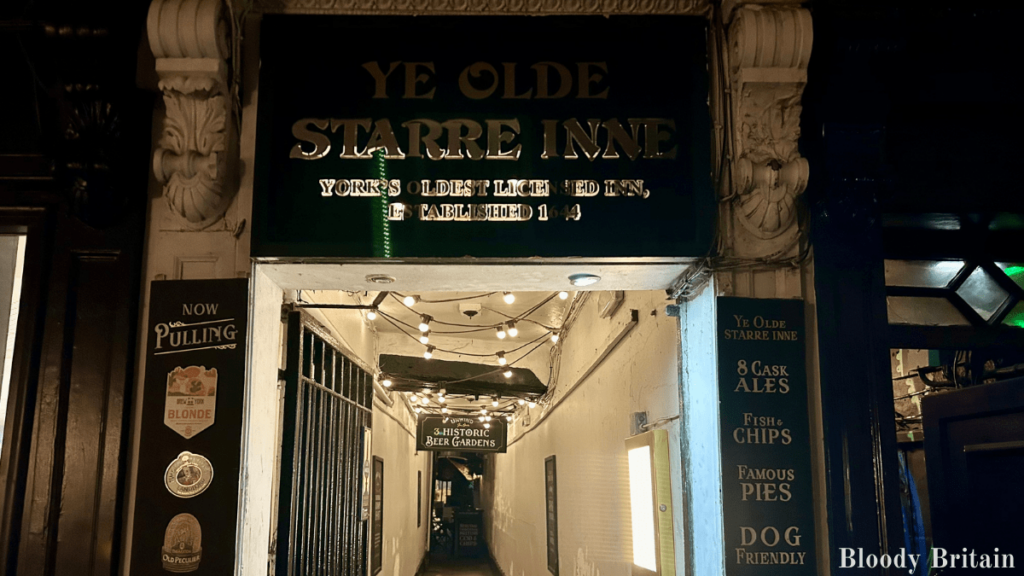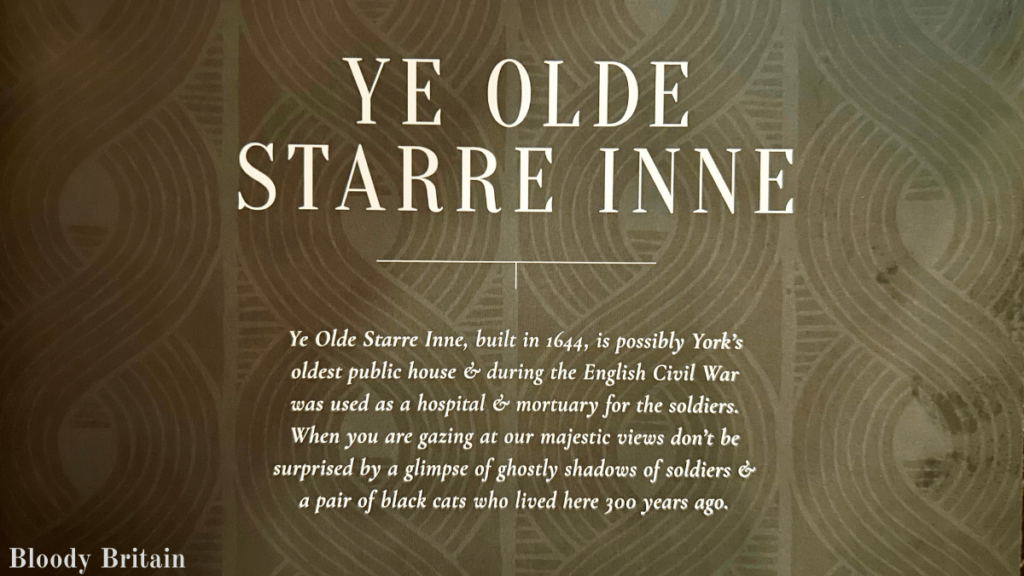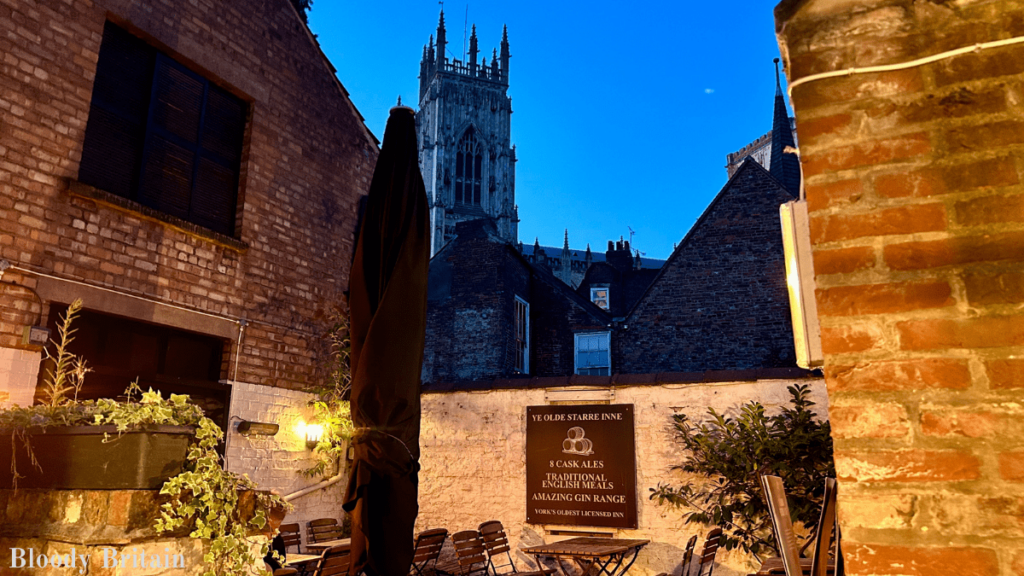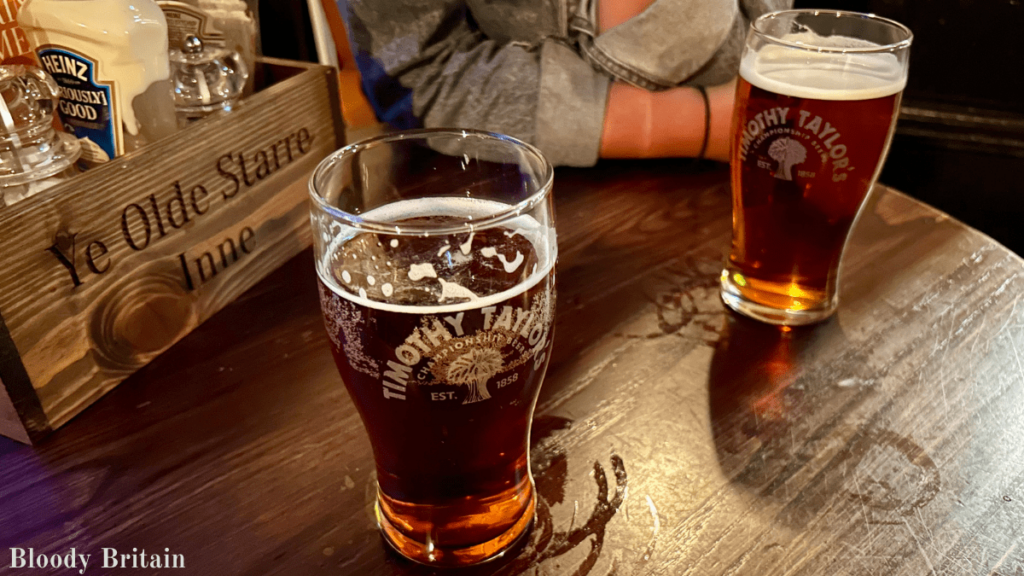With the scent of a freshly brewed York bitter in my nose, I stare out of the distorted window of Ye Olde Starre Inn and down the slanted alley that leads to this equally crooked old pub that dates back to the height of the English Civil War. The ancient floorboards under my feet feed the memories of centuries into my mind, and they’re some dark memories indeed.
While the alley leading to this iconic pub in the backstreets of York is now home to advertising boards showcasing the pub’s special offers and luring in passersby with tales of its numerous resident ghosts, it’s not hard to picture what this snicket looked like back in 1644. After all, barely anything has changed.

The mighty city of York was a keen prize for Cromwell’s New Model Army, yet it was one that was far from easily won. Under the promise of no looting and general carnage, one can imagine the mixed feelings of victory and anger felt by the Roundheads as they marched into this once Royalist stronghold.
”He protests, but they fall upon deaf ears and are responded to by the crude negotiators of shot and blade. Should he protest further, the landlord no doubt knew he would end up looking like the carts of mutilated corpses the Roundheads were trailing behind them.”
One place in particular, Ye Olde Starre Inne, soon saw its one-way in, one-way out alleyway stormed by a single file of Roundhead soldiers. Their eyes filled with the rage of battle, their tan hide coats spattered with the blood of slain enemies and their own comrades, and a pressing issue burning through their minds.
The road to York had been a bloody one, and the victorious parliamentarians brought with them a string of dead, wounded, and soon-to-be dead. York might have fallen, but the threat of royalist guerrillas was all too real.
The crude negotiators of shot and blade.
The Roundheads needed a safe place to treat their wounded and hold their dead, and this Inn was ideal. The narrow alleyway could be barricaded when needed, and any attempts at storming it could be met with a fury of musket fire that would make the infamously inaccurate weapons of the English Civil War struggle to miss their target.

Still, an obstacle stood in their way. The inn’s former landlord was a staunch royalist who objected to the Roundhead’s acquisition of his beloved inn. But these men loyal to parliament had doubtless cut down countless allies of the king in a war where decency seemed a distant memory and a humble landlord was something that could be easily dispatched.
As I peer out at the entrance of the inn welcoming patrons to the main corridor leading to the bar, I can envision the sight that must have unfolded here in 1644 amongst the the modern footwear of the current patrons.
Mud-soaked boots that have bore witness to the horror of war storming across the crooked wooden floorboards before being intercepted by the cleaner, less militarized boots of the landlord. He protests, but they fall upon deaf ears and are responded to by the crude negotiators of shot and blade. Should he protest further, the landlord no doubt knew he would end up looking like the carts of mutilated corpses the Roundheads were trailing behind them.
The doors open, and the dead and dying of the victorious army trail in. The upper floor of the inn, where I’m currently writing this piece, is turned into a military hospital. The cooler cellars, on the other hand, become a morgue.” The energy absorbed by this inn’s walls on that grim day hasn’t faded as the centuries passed by.
“It’s not very welcoming down there, that’s for sure.”
That’s what the chirpy Yorkshire barmaid told me while pouring me a pint of Ye Olde Stare Bitter, which is a fantastic drop, by the way. Like many people I encounter in Yorkshire, she was refreshingly polite, down to earth, and more than willing to chat about the pub’s dark past.

It should come as no surprise that ye olde starre inn has its fair share of ghosts. Yet rather than the single characters many historic pubs in York cite to have met, this blood-soaked inn is home to the collective screams of dying soldiers undergoing the sheer hell of 17th-century surgery in an attempt to save their lives.
The pub’s cellars, largely off-limits to the general public, are the source of much intrigue for the countless ghost hunters who flock to the ancient city. The friendly barmaid recited a tale of her colleague venturing down there, which she described as a rabbit warren of vaulted ceilings stretching the length of the inn and being joined by an unexpected guest.
Hearing a noise behind her, she spotted the silhouette of a short man wearing a large brimmed hat intensely peering at her from behind one of the pillars between her and the staircase she had just descended before disappearing into the blackness.
“Alright, which one of you was it?” She asked her colleagues upon returning upstairs, only to be met with blank stares. Needless to say, it was her last time venturing into the former English Civil War morgue alone.
A Future as Morbid as Its Past? Not Quite.
I first ventured into the history-sodden landscape of Ye Olde Starre Inne many years ago with my dad. Although far too young to sample the bitter, I do recall a cracking pie supplied by a proper Yorkshire company along with a side of home-cooked British chips and lashings of gravy.

Nowadays, that’s a distant memory. Like many historic pubs across England, Ye Olde Starre Inne has fallen under the umbrella of Greene King, resulting in a generic menu that leaves much to be desired. You can still get a pie in here, but it’s easily beaten by countless other pubs across the city.
The service, though? It’s spot on. The team running Ye Olde Starre Inne is a classically friendly Yorkshire bunch, and the bitter on draught is a fine pint indeed. I also love the combination of quirky drinking quarters throughout.
In the winter months, one can retreat inside and sup on ale in the cozy booths made of stained glass and mahogany. When it gets warmer, there’s an abundance of beer gardens and alleyways to take a seat in, with one beer garden in particular having an incredible backdrop of the mighty York Minster behind it.
One thing is for sure, though: I wouldn’t recommend drinking down in the cellars.



[…] Ye Olde Starre Inne: Solid Bitter, Haunted Morgues & Civil Wars […]